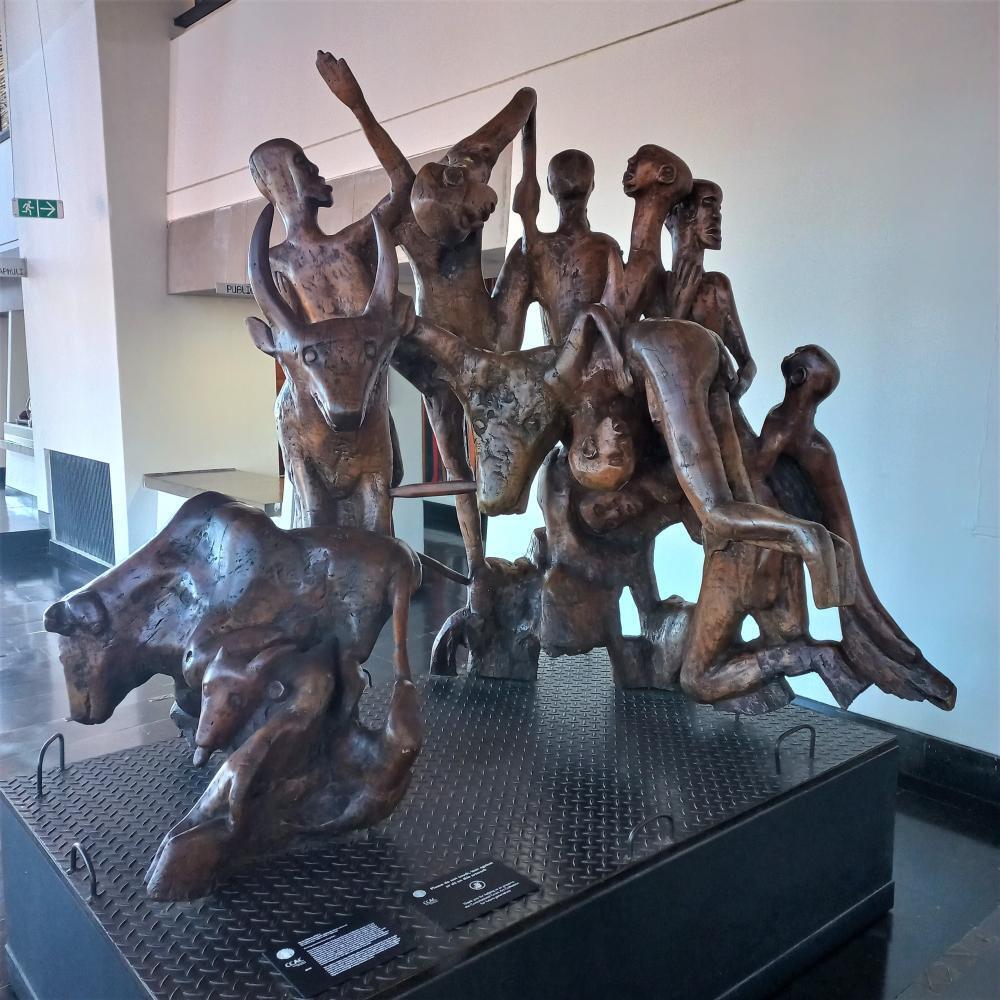The Legend of the Death of Hlopeka
| CCAC #: | 0310L |
| Artwork title: | The Legend of the Death of Hlopeka |
| Artist(s): |
Noria Mabasa |
| Year made: | 2004 |
| Artwork type: | Sculpture or object |
| Medium: | Fig wood |
| Dimensions (mm): | 185 x 170 x 135 |
| Source: | On loan from Greg Dale |
| Installation type: | Movable artwork |
| Current location: | On public display |
| Signage: | Noria Mabasa is a sculptor of large wood carvings and figurative ceramic work that came to prominence in the mid-1980s. She lives in the Limpopo province, north of Johannesburg. Dreams and visions of her ancestors inspire her sculptures. Mabasa recounts that she was instructed in a dream by an older woman of her ancestry to start making clay and wood carvings, to alleviate the poverty and ill-health she was facing during apartheid in the 1970s. She was also told not to cut her hair as this would diminish her creativity – she keeps her hair braided to this day. She began carving depictions of Venda mythology and spirituality, traditional ceremonies and the daily lives of mainly women and children in her community. Mabasa is known for advocating for women's independence and rights and traditional way of life. This sculpture depicts a boy, Hlopeka, who a bull has struck through his chest. He dangles from the horn with his knees bent. Behind him, a woman stands in shock with her hand raised to her mouth. Amongst the bulls is a calf, who might've caused the bull's aggression in the safe-keeping of the herd's young. Moving around the sculpture, two of the figures appear to be examining the body of Hlopeka. Mabasa noted that she witnessed this tragedy and that it left a lasting impression on her. |

Photographer: Unrecorded
Photo copyright: Consult with CCT curatorial team
NOTE: The process of photographing artworks in the CCAC is underway - we are currently working to improve image quality and display on the CMS but have included internal reference photos for identification purposes in the interim.